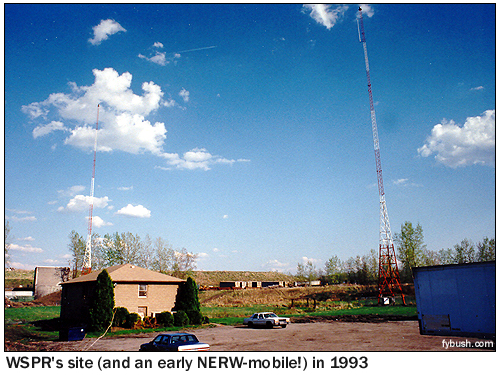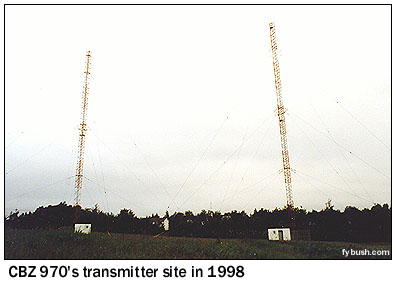 This is Freckles.
She's 6 years old, weighs about 32 pounds, and has orange and
white fur and brown eyes. She likes chasing squirrels and eating
cheese, and dislikes cats and loud noises outside. Her favorite
radio stations are WOOF in Dothan, Alabama and KDOG in North
Mankato, Minn. She doesn't understand why her owner has been
so amused by the recent fund-raising appeals on Dave Hughes'
DCRTV site -- in fact, she's
never even been to Washington D.C. -- but she knows that if the
nice people who read DCRTV and NERW contribute to keep those
columns coming, she'll have plenty of dog food to eat...and maybe
even some cheese. Click
here to make a secure MC/Visa contribution... This is Freckles.
She's 6 years old, weighs about 32 pounds, and has orange and
white fur and brown eyes. She likes chasing squirrels and eating
cheese, and dislikes cats and loud noises outside. Her favorite
radio stations are WOOF in Dothan, Alabama and KDOG in North
Mankato, Minn. She doesn't understand why her owner has been
so amused by the recent fund-raising appeals on Dave Hughes'
DCRTV site -- in fact, she's
never even been to Washington D.C. -- but she knows that if the
nice people who read DCRTV and NERW contribute to keep those
columns coming, she'll have plenty of dog food to eat...and maybe
even some cheese. Click
here to make a secure MC/Visa contribution... |
July 15, 2002
FCC Puts Clear Channel's Augusta Deal Under
Enhanced Scrutiny
By SCOTT FYBUSH
*Is the regulatory tide turning against big
clusters and consolidation? A proposed Clear Channel purchase
in MAINE is one of three deals facing a level of scrutiny
the FCC hasn't employed in decades.
Clear Channel has been operating WSKW (1160 Skowhegan) and
WHQO (107.9 Skowhegan) under an LMA from Mountain Wireless for
several years, ever since Mountain's proposed sale of the stations
to Cumulus fell through due to financial problems at the Cumulus
end.
Last October, Clear Channel filed to convert the LMA to ownership,
a deal that would give Mountain Wireless $1.8 million and add
WHQO and WSKW to the rest of the Clear Channel Augusta-Waterville
cluster, a group that includes WFAU (1280 Gardiner), WCTB (93.5
Fairfield), WKCG (101.3 Augusta), WABK (104.3 Gardiner) and WTOS
(105.1 Skowhegan, another former Mountain Wireless station).

WHQO has been simulcasting the talk programming from Clear
Channel's WVOM (103.9 Howland) in the Bangor market, while WSKW
has been sharing a sports format with WFAU and WIGY (97.5 Madison,
just returned to the air this week after suffering tower damage).
For the last few months, the Mountain stations have even operated
from the same Augusta facility as the other Clear Channel central
Maine stations.
The hitch? If the deal is approved by the FCC (it already
has Justice Department clearance), Clear Channel and Citadel
(which has WMME/WEZW and WEBB/WTVL in the market) would share
a whopping 99.5% of the radio revenues in the market, with just
a handful of commercially-licensed religious stations (WMDR 1340,
WWWA 95.3) as "competition" for radio ad dollars.
So the FCC has designated the WHQO/WSKW sale, along with a
Clear Channel purchase in Youngstown, Ohio (WNIO 1390, WAKZ 95.9
Sharpsville PA, WICT 95.1 Grove City PA, WBBG 106.1 Niles OH)
and another one in Killeen-Temple, Texas, for a hearing on market
concentration. Stay tuned as the Commission sets what promises
to be a new precedent for acceptable levels of station revenue
and ratings share...we'll keep you posted.
*More news from the Pine Tree State: the NFL champion New
England Patriots will make the move to FM in the Portland market
this fall. Previously heard on Saga's WZAN (970 Portland), the
Super Bowl winners will move to Citadel's WBLM (102.9 Portland).
Down the coast, the team moves from WGIR simulcasts WGIN/WGIP
(930 Rochester/1540 Exeter) to Citadel's "Shark" WSHK
(105.3 Kittery ME)/WSAK (102.1 Hampton NH).
Back up in Bangor, Leo Johnson is the new morning guy on country
"Bear" WBFB (104.7 Belfast). Johnson was formerly heard
on Clear Channel sister news/talker WVOM; his move to mornings
sends Dave Glidden back to afternoons on the Bear.
*Heading into NEW HAMPSHIRE, all the
news comes from Cheshire County, where Saga formally applies
for WKVT-FM1 in Keene. The on-channel booster of WKVT-FM (92.7
Brattleboro VT) would run a 250-watt directional signal from
the studio/transmitter site of sister station WKNE (1290) in
Keene.
Saga is also applying for new calls for the two Keene stations
it's buying from Scott Roberts. Oldies WXOD (98.7 Winchester)
becomes WOQL, matching Saga sister "Cool" WQLL (96.5
Bedford) over in the Manchester market, while news-talk WKBK
(1220 Keene) has applied to become WZBK, for reasons we still
don't know.
*Two MASSACHUSETTS PDs lost their
jobs last week, both at Entercom stations in the Boston market.
Jeff Scott, who came to "Star" WQSX (93.7 Lawrence)
just this past April, was out the door last Monday, followed
shortly by Dave Douglas, who'd helmed WAAF (107.3 Worcester)
for several years. Douglas will be replaced by Keith Hastings,
inbound from Saga active rocker WLZR in Milwaukee; no replacement
has been named yet for Scott.
Over on the AM side, Sporting News Radio's WWZN (1510 Boston)
made the tweaks and signed on its new daytime pattern this week
from its four-tower site near the Waltham-Belmont line. The new
pattern keeps day power at 50 kW, but expands the signal a bit
to reach some areas in the western and southern suburbs where
1510 used to protect now-defunct WNLC (1510 New London CT). No
change to WWZN's 50 kW night signal, which is so deficient in
parts of the market that even the station itself seems to think
it runs only 5 or 10 kilowatts after dark!
Oops: You won't see home-shopping WWDP (Channel 46) on EchoStar's
DISH Network any time soon. The station accidentally sent its
must-carry request for EchoStar to competitor DirecTV instead,
thus missing the deadline to elect mandatory carriage on the
satellite system - and this week the FCC upheld EchoStar's rejection
of WWDP's appeal.
You also won't be seeing any Bruins games on broadcast TV
next season. The Boston Herald reports that the team will put
all its non-network schedule next season on New England Sports
Network (NESN), the first time since the beginning of broadcast
TV in Boston that the team won't be available over the air. (WSBK,
channel 38, had been the most recent broadcast rights holder.)
A strange one from Winchendon: in April, we told you that
Toccoa Falls College and Friends of Radio Maria had settled their
competing applications for 91.1 in Winchendon, with Toccoa Falls
getting the CP. Now Toccoa Falls has applied to transfer the
CP...to Friends of Radio Maria.

Over in Springfield, WSPR (1270) really is losing its two-tower
site in West Springfield, so the station has applied to move
its 5 kilowatts a mile or so to the northwest, diplexing on the
existing tower of now-co-owned WACM (1490 West Springfield).
WSPR would build a new top-loaded 56-meter tower to fill out
its directional array. The new pattern would be tipped slightly
counterclockwise from the existing figure-eight, but would still
have broad nulls to the northeast and southwest.
Just up the valley, WRNX (100.9 Amherst) picks up flagship
status for UMass sports for the upcoming season. WHMP (1400 Northampton)
had been the longtime UMass flagship.
*A surprise call change in RHODE ISLAND,
as Hall flips WWRI (1450 West Warwick) to WLKW. The change came
just a few days after NERW mused that the WLKW calls would make
a good fit to replace the tainted WALE on the just-sold 990 facility
in the market; suppose Hall was listening?
In any event, there's no change to 1450's satellite-delivered
urban oldies format, still simulcast with WNBH (1340 New Bedford
MA).
*A former CONNECTICUT TV reporter
is heading back to the Nutmeg State. Lisa Carberg was at NBC's
WVIT (Channel 30) in New Britain from 1995-1999, leaving to join
the Fox News Channel. Now she's returning to WVIT to handle health
and feature segments.
 *The NEW YORK
TV dial continues to return to normalcy as the one-year anniversary
of September 11 approaches. The latest station to return to full
power after losing its World Trade Center transmitter is Telemundo's
WNJU (Channel 47), licensed to Linden, N.J. *The NEW YORK
TV dial continues to return to normalcy as the one-year anniversary
of September 11 approaches. The latest station to return to full
power after losing its World Trade Center transmitter is Telemundo's
WNJU (Channel 47), licensed to Linden, N.J.
WNJU had been using the Armstrong FM tower in Alpine, N.J.
as a temporary site for the last few months, with a weak signal
over most of the city. It signed back on from the Empire State
Building July 1, leaving only Pax's WPXN (Channel 31) operating
from another site.
(WPXN appears to be planning to make its permanent home at
the First Mountain site in East Orange, N.J. that's home to WFME
94.7 and was once home to the old WATV on channel 13.)
On the English side of the NBC family in New York, WNBC (Channel
4) is saying goodbye to president and GM Dennis Swanson, who's
retiring after a long career that included ABC Sports and six
years at the helm of top-rated channel 4. Replacing Swanson is
Frank Comerford, VP of sales and marketing for the NBC stations
group.
Moving upstate, Dennis Jackson's WRIP (97.9 Windham) applies
for a 35-watt directional booster. WRIP-1 (97.9 Hunter) will
operate from Colonel's Chair at the Hunter Mountain ski area,
a few miles south from WRIP in an area that's now somewhat shadowed
from the main signal.
TV viewers in Binghamton, Watertown and Utica are again seeing
early-morning newscasts on their ABC affiliates, but without
a lot of the localism they're used to. After more than a month
without any local news in those slots, WIVT (Channel 34) in Binghamton,
WWTI (Channel 50) in Watertown and WUTR (Channel 20) in Utica
put "Daybreak" on the air last Monday to fill the 5-7
AM slot. The show, produced by parent Clear Channel at WIXT (Channel
9) in Syracuse, includes brief local news updates twice an hour,
but most of the content is regionalized - a big cost savings,
to be sure, but at what price to localism? (Especially since
all three of the former Ackerley Group UHFs compete against a
single strong heritage VHF in their respective markets...) As
for weekends, those slots are still being filled (at least on
WWTI and WUTR) with Conus' All News Channel national news, and
we're told local news has also yet to return at noon in Watertown.
Watertown viewers have a new choice on cable, at least; Time
Warner up there finally added WLOT-LP (Channel 66) to its lineup.
WLOT has the UPN affiliation for Watertown, as well as doing
local news at 10 PM against Fox outlet WNYF-LP (Channel 28),
programmed by CBS affiliate WWNY (Channel 7).
Binghamton has a new choice on the radio, in a few blocks
of the city's Hillcrest area, at least: the Wyoming Conference
Children's Home is running micropower "WBTK" on 102.3,
programmed by the kids who live at the center. Advising the station
("W-By-The-Kids") is former WNBF morning man John Leslie.
On the noncomm side of the dial, WIFF (90.1 Binghamton, heard
better in most of the city on translator W285DI at 104.9) is
being sold. Station founder (and anti-abortion crusader) Randall
Terry (doing business as Jesus is King Communications) is selling
the Christian rock outlet to CSN International for $67,000; look
for it to become yet another relay on the Calvary Satellite Network
as soon as the deal closes.
 A big "thumbs down"
to the Rochester Democrat and Chronicle, for continuing
carelessness in covering the broadcast industry at a level that
rivals our usual bete noir, the Boston Globe. Not only did the
D&C have to correct itself after an item in its inane
"Thumbs Up, Thumbs Down" column praised "WDKX-FM
(104.3)" (the urban station is at 103.9 on the dial), but
the paper's TV book still hasn't figured out that LPTV W59BV
has moved. After two weeks of correctly listing the station as
"W42CO" (on Sunday, anyway; the daily still read "59"),
yesterday's TV book was right back to "W59BV." (What's
more, the listings shown are for Buffalo's WNYB, channel 26 -
but 59/42 now runs the satellite signal from parent Tri-State
Christian TV, with a somewhat different program lineup!) A big "thumbs down"
to the Rochester Democrat and Chronicle, for continuing
carelessness in covering the broadcast industry at a level that
rivals our usual bete noir, the Boston Globe. Not only did the
D&C have to correct itself after an item in its inane
"Thumbs Up, Thumbs Down" column praised "WDKX-FM
(104.3)" (the urban station is at 103.9 on the dial), but
the paper's TV book still hasn't figured out that LPTV W59BV
has moved. After two weeks of correctly listing the station as
"W42CO" (on Sunday, anyway; the daily still read "59"),
yesterday's TV book was right back to "W59BV." (What's
more, the listings shown are for Buffalo's WNYB, channel 26 -
but 59/42 now runs the satellite signal from parent Tri-State
Christian TV, with a somewhat different program lineup!)
And while our friend Dave Hughes down at Washington's DCRTV.com enjoys busting the
Washington Post for its inaccurate radio listings, there's at
least one way in which the D&C is the Post's equal
(and only one way, come to think of it): the radio listings in
the Sunday TV book are so woefully out of date that at least
a third of them are completely inaccurate. Hmmph!
Heading over toward Buffalo, Family Life Ministries has applied
to boost the power on WCOU (88.3 Warsaw) from 4 kW to 11 kW.
It's part of an agreement with Conestoga College's CJIQ (88.3
Paris ON), which now has WCOU's blessing to upgrade to a full
class B facility if it so desires.
 Buffalo TV viewers are seeing
more snow than they're accustomed to. At NBC affiliate WGRZ (Channel
2)'s site in the town of Wales, NERW found the analog antenna
sitting on the ground, lashed to the base of the tower, when
we stopped by last week. WGRZ is transmitting its analog signal
at about half power from its low six-bay auxiliary antenna while
work continues to install the WGRZ-DT (Channel 33) antenna and
reinstall the analog antenna above it. We're told it will be
late this week before channel 2 returns to full power. Buffalo TV viewers are seeing
more snow than they're accustomed to. At NBC affiliate WGRZ (Channel
2)'s site in the town of Wales, NERW found the analog antenna
sitting on the ground, lashed to the base of the tower, when
we stopped by last week. WGRZ is transmitting its analog signal
at about half power from its low six-bay auxiliary antenna while
work continues to install the WGRZ-DT (Channel 33) antenna and
reinstall the analog antenna above it. We're told it will be
late this week before channel 2 returns to full power.
Meanwhile up on Grand Island, we're told WNED (Channel 17)
and WNLO (Channel 23) are also at reduced power while workers
install the WNED-DT (Channel 43) antenna on the tower.
*One NEW JERSEY item this week, and
we have to go all the way to Indiana for it: Auricle Communications,
parent of WFMU (91.1 East Orange), is selling WAJW (89.5 Chesterton
IN) to Chicago's public broadcaster WBEZ (91.5). Auricle put
WAJW on the air a few years ago with the intent of creating a
freeform radio voice for Chicago similar to the service WFMU
provides to New York and vicinity - but the station, on the southern
shore of Lake Michigan, was too far from the Windy City to put
in a reliable signal.
WAJW has largely been simulcasting WFMU; its sale to WBEZ
(which will use it to boost its own coverage east of Chicago)
puts $550,000 in Auricle's deserving (and needy) pockets.
*In PENNSYLVANIA, VHF television may
finally come to the Lehigh Valley, almost five decades after
the area's first UHF station signed on. Religious WBPH (Channel
60) has applied to change its DTV allocation from channel 59
to channel 9; without the change, WBPH's analog and digital channels
would both be "out of core" and the station would have
to seek a brand-new channel assignment when 52-69 are removed
from TV service. WBPH also applied for a license to cover this
week for a power increase that takes the station up to nearly
3 megawatts of visual power.
On the radio side, WLEV (100.7 Allentown) takes the "interim"
out of Sam Malone's PD title.
Over in Reading, it's the end of an era as the FCC wraps up
its very last comparative renewal hearing. When WTVE (Channel
51) was up for renewal in the mid-nineties, licensee Reading
Broadcasters Inc. was challenged by a competing application filed
by a group called Adams Communications Corp. Adams was looking
to challenge the license of a home-shopping station, and originally
planned to make WHSH (Channel 66) near Boston its target.
When a proposed transmitter site for Adams' application fell
through, the company turned its attention to Reading, looking
for evidence that the home shopping format didn't meet the community's
needs. After some missteps (the Reading resident hired by Adams
to tape WTVE mistakenly taped several days of a cable home shopping
channel instead), Adams produced evidence that suggested Reading
Broadcasters' principals (the same folks behind Two if by Sea,
the onetime licensee of channel 18 in Hartford and channel 46
in Norwell, Mass.) had been dishonest on at least one FCC application.
In April 2001, an FCC examiner granted Adams' competing application,
but Reading Broadcasters appealed - and last week, the FCC closed
the matter by finding Reading Broadcasters to be qualified as
a licensee, rejecting Adams' application and allowing WTVE to
remain in its current hands.
In the meantime, Congress changed the rules of the game, so
today there's virtually nothing a licensee can do that would
cause its license not to be renewed (and almost nothing a member
of the public can do should a local station fail to serve the
"public interest, convenience and necessity," a concept
that now seems to be forgotten at the FCC.) The WTVE hearing
was the very last to be resolved under the old rules.
Up in Wellsboro, WNBQ (92.3 Mansfield) is applying for a booster
with a whopping 0.0002 kilowatts of power. That's two-tenths
of a watt, folks - just twice the threshold for license-free
broadcasting - but the station believes the signal (on the tower
of co-owned WNBT 1490) would help it fill a little hole in the
Mansfield signal over downtown Wellsboro.
NERW wonders if this is a prelude to the end of the simulcast
between WNBQ and WNBT-FM (104.5 Wellsboro), which always did
seem to have a lot of overlap; the WNBQ signal (when the processing
is working, anyway) reaches north almost to Corning, N.Y.
 In Johnstown, WQEJ (89.7), the
relayer of Pittsburgh's WQED (89.3), has resubmitted its application
to move from the current tower of WJAC-TV (Channel 6) to the
nearby tower WJAC is building for DTV. WQEJ's first application
was thrown out because the specified power (8.5 kW) slightly
exceeded the class maximum for the station; it's resubmitted
the application with 8.4 kW instead. In Johnstown, WQEJ (89.7), the
relayer of Pittsburgh's WQED (89.3), has resubmitted its application
to move from the current tower of WJAC-TV (Channel 6) to the
nearby tower WJAC is building for DTV. WQEJ's first application
was thrown out because the specified power (8.5 kW) slightly
exceeded the class maximum for the station; it's resubmitted
the application with 8.4 kW instead.
Sorry to report the passing of another Pittsburgh newscaster:
Paul Long died Friday (July 12) at age 86. Long's Pittsburgh
career began at KDKA radio in 1946 and expanded to KDKA-TV in
1956; he moved to WTAE-TV (Channel 4) in 1969 and remained there
until 1994, when he retired at age 78.
*The big news from CANADA comes from
Toronto, where the CRTC released the applications it's received
for new ethnic stations to serve the nation's largest city.
Most of the applications are for 101.3 on the FM dial, a frequency
that ethnic broadcaster CHIN has been using as a low-power relay
to help its AM station (on 1540 kHz) reach areas outside its
directional pattern. (Powerful CHIN-FM, on 100.7, runs separate
programming from the 1540/101.3 simulcast.)
CHIN filed no fewer than three applications as part of the
latest round, trying to maintain its dual spot on the FM dial.
The station's preferred solution involves being granted a new
license for 101.3 (with 90 watts), keeping the existing 1540
and 100.7 as separate stations and moving the 1540 relay from
101.3 (with 22 watts) to 91.9 (with 35 watts). If that's not
granted, CHIN has a backup plan: it's also applying to shut down
the 1540 signal, replacing its directional 50 kilowatts with
a 90-watt FM signal on 101.3.
But CHIN has plenty of competition: other applicants for 101.3
include Ark Broadcasting (178 watts), Canadian Multicultural
Radio (440 watts), Canadian Thamil Broadcasting Corp. (440 watts),
Catholic Youth Services-KSM Inc. (1140 watts), CKMW Radio Inc.
(446 watts; the company also owns CIAO 530 and CIDC 103.5) and
Infinity Broadcasting Inc. (no relation to the US company by
the same name, applying for 310 watts).
Additional applications include Humber College, for 60 watts
on 91.9; Cooperative Radiophonique de Toronto, for 1200 watts
on 91.7; Caribbean and African Radio Network, for 78 watts on
105.1 and an AM signal on 790, with 250 watts day and 50 watts
night; Geetha Vanni, for 1 kW on 1650; San Lorenzo Latin American
Community Centre, for 1 kW on 1610 and Magic 1610 Markham, for
a new English-language station to serve suburban Markham with
10 kW day and 5 kW night on 1610.
And three applicants want new digital radio signals in Toronto:
Korean Community Radio, Sur Sagar Radio and CHWO (AM 740).
 Meanwhile, the folks at the CHUM
Group have quietly pulled the plug on 1050chum.com. When CHUM
(1050) flipped from oldies to sports in May 2001, the company
said the Webcast would continue with the oldies format indefinitely;
today, the company says site traffic didn't live up to expectations
and "it no longer makes sense to continue." Meanwhile, the folks at the CHUM
Group have quietly pulled the plug on 1050chum.com. When CHUM
(1050) flipped from oldies to sports in May 2001, the company
said the Webcast would continue with the oldies format indefinitely;
today, the company says site traffic didn't live up to expectations
and "it no longer makes sense to continue."
Over in Windsor, the CBC has applied to add CBE (1550) and
CBE-FM (89.9) to the digital radio dial, where the CHUM Group's
four stations already have a construction permit.
London's Energy 103.1 (CFHK) dropped the last of its simulcast
with its Corus sister station (CING 95.3 Hamilton) to go live
and local 24/7 last week. Milkman Unlimited reports the lineup
includes Andy and Marianne in mornings, Sarah Bartok middays
and Oz in afternoons. Sister station "The Hawk" (CKDK
103.9) moves Kyle "the Sarge" McCone from afternoons
to mornings with Derek "Rock" Botten next week. Dan
Walker comes over from middays at CFPL-FM (95.9, "FM96")
to do afternoons at the Hawk.
Up north in Orillia, the sale of CICX (EZ Rock 105.9) to Rogers
didn't include Telemedia's "EZ Rock" trademark, so
the station changed identities on Friday to "105.9 Lite
FM."
Way up north, country music returned to the dial in Timmins
on Friday morning, when CHMT (93.1) flipped from AC "Mix
93" to country "Moose FM." The area has been country-less
since last year, when CKGB (99.3) dropped country for "EZ
Rock."
There's a new station in Cobourg: the new 93.3 signal there
began testing last week, and we hear it's already causing havoc
to the recently-upgraded signal of WBBF-FM (93.3 Fairport) just
across Lake Ontario (and vice versa, no doubt!)
Outside Ottawa, Algonquin College's CKDJ (96.9 Nepean) applies
to change frequency to 107.9 and boost power from 8 watts to
100 watts.
 The big news from Quebec was the
death on Friday of Gord Sinclair, one of the most distinctive
voices in Canadian radio. The big news from Quebec was the
death on Friday of Gord Sinclair, one of the most distinctive
voices in Canadian radio.
Sinclair's career began at the old CHVC (1600) in Niagara
Falls 55 years ago; he spent most of his career in Montreal,
first at CFCF (600), then as owner and founder of CFOX (1470
Pointe Claire), then back to CFCF from 1975 until 1982, when
he joined CJAD (800) as a news director, commentator and host
of the daily noon news and a Saturday noon show.
Sinclair, the son of legendary Toronto broadcaster Gordon
("The Americans") Sinclair, was 74; he would have preferred
that we say he was 39.
Elsewhere in the province, CHAA (103.3 Longueuil) was granted
a move from its current transmitter site to a new one 8 kilometers
to the west; the station will drop power from 104 watts to 53
watts.
In Quebec City, Radio-Canada's CBVT (Channel 11) was granted
its move from its Ile d'Orleans tower, east of the old city,
to the Mont Belair community antenna site west of town. CBVT
will reduce power from 252 kilowatts down to 132 kW, moving up
in height as it makes the move.
Yves Sauve's construction permit for CJRP St.-Nicolas (serving
Quebec City) has a new frequency; he was granted a move from
1060 (the frequency of the long-dark original CJRP) to 980 (the
frequency more recently abandoned by Radio-Canada's CBV, which
moved to FM on 106.3 in 1998).
 And we'll end in the Maritimes,
with the biggest surprise of the week: the CBC is applying to
move CBZ (970 Fredericton) from the AM dial to FM. And we'll end in the Maritimes,
with the biggest surprise of the week: the CBC is applying to
move CBZ (970 Fredericton) from the AM dial to FM.
CBZ would run 3200 watts on 99.5 MHz if the move is granted.
Fredericton already hears CBC Radio One on FM, thanks to CBD
(91.3 Saint John), which covers the city from its Mount Champlain
transmitter site - but CBD runs local Saint John programming
in drivetime, while CBZ runs programming targeted to the provincial
capital. (The move would also force a call change for CBZ-FM,
the CBC Radio Two outlet on 101.5 that serves Fredericton and
Saint John from Mount Champlain.)
*Finally this week, we're happy to announce that our good
friends at M Street have released the 11th edition of the M
Street Radio Directory. With the disappearance of the
old Vane Jones log and the declining accuracy of the Broadcasting
Yearbook, the M Street directory is widely regarded as the most
accurate, most comprehensive source of information on the US
and Canadian radio scene - and we're thrilled to be able to offer
it to you at a substantial discount!
The directory includes power, frequency, ownership, key personnel,
formats, ratings and much more information for every radio station
in the U.S. and Canada, and now runs almost 900 pages in an 8.5"
x 11" softcover book. List price is $79 (plus $7 shipping/handling),
but if you order through fybush.com/NorthEast Radio Watch, you
can get this invaluable resource on your shelf for $69 (plus
$7 s/h) - a $10 savings! And your purchase benefits the continued
publication of NERW and Tower Site of the Week, so everybody
wins! Stay tuned - ordering details will be made available later
this week right here on fybush.com.
*We'll see you next Monday with much more...stay tuned!
NorthEast Radio Watch is made possible by the generous
contributions of our regular readers. If you enjoy NERW, please
click here to
learn how you can help make continued publication possible. NERW
is copyright
2002 by Scott Fybush. |

